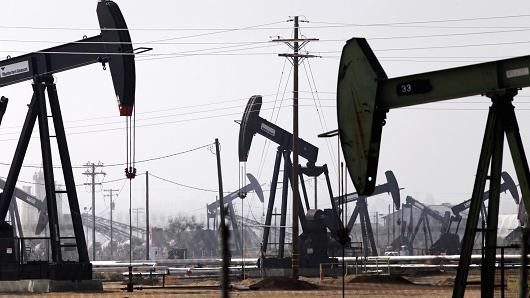U.S. crude inventories fell by a more-than-expected 1.8 million barrels last week, American Petroleum Institute data showed on Tuesday. The focus is now on whether the government's supply report on Wednesday confirms the decline.
"Should it confirm that U.S. crude stocks did indeed fall for what would only be the second time this year, it will mark the start of a sustained tightening in U.S. crude supplies," said Stephen Brennock of oil broker PVM.
Global benchmark Brent crude had risen 48 cents to $54.65 a barrel by 1000 GMT. It reached $54.91 intraday, the highest since March 8. U.S. crude was also up 48 cents at $51.52.
